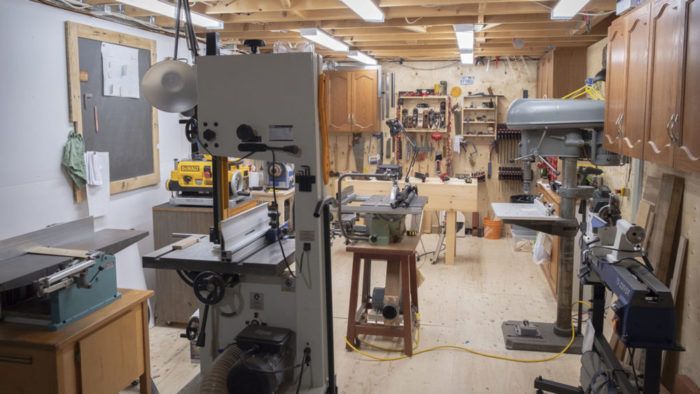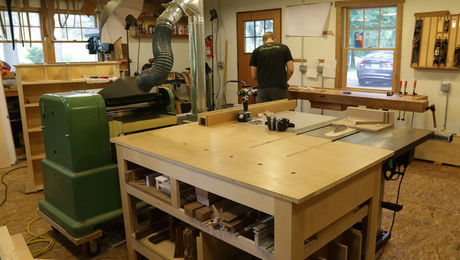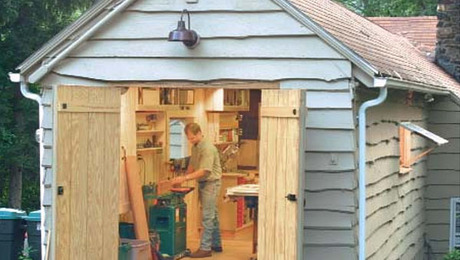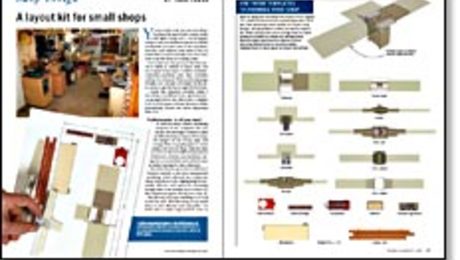The Ever-Adaptable Shop
Vic Tesolin thinks we should allow our shop spaces to change based on the way we work and how we use our tools.

Over the last 20 years I’ve worked in about 10 different shops, everything from a wood hobby club on a military base to a school shop at Rosewood Studio. I’ve also had five personal shops over the years, and I’ve worked in Ron Barter’s shop (owner of Rosewood Studio). Not to mention the countless shops I’ve seen with all of my teaching gigs and touring around the world with Veritas and Lee Valley Tools. So, I guess what I’m saying is: I’ve seen and worked in many different shops.
At the beginning of 2019, some serious life changes had me moving to a new city and having to build my fifth shop. When faced with the task, I have to admit, I got cocky. I’ve done this a few times before, so I was confident that this one would be a no-brainer. I’ve learned over the years what I liked in a shop and what I didn’t. I was familiar with my machines and knew how I liked to work with them, both on their own and together in a comfortable workflow.
Like every shop space I’ve designed, I started with a scale drawing of the space, the machines, and work areas. I started playing the game of moving things around on paper because I think every woodworker can see why doing this is better than moving the machines themselves countless times. I was convinced that I would nail the layout the first time and I would be done in quick order. I’m not sure why after 20 years of woodworking that I thought this would happen, and I can assure you it didn’t.
Click here for a tour of Vic’s last shop
I’ve worked in this space for almost a year and learned a lot about what needed adjusting and what was working well. Just this weekend, I spent time in my shop making tweaks and adjustments to the layout. The interesting part about this shop is that I have two adjoining rooms and because this is new to me, I wasn’t using both spaces to their best advantage. I took some lesser-used tools and put them into the side room while keeping the workhorses in the main room with my bench and hand tools.
At the end of the weekend I sat in my shop, looked around, and was satisfied with what I’d done. Today I’ll be in there working on a project, putting it to the true test, and seeing if there is anything else that needs tweaking. Don’t worry about your shop morphing—it’s not a sign of failure and you’re not dense. Shop spaces change all the time based on the way we work and how we use our tools. Adding tools and removing them can also cause workflow turmoil, forcing you to go back to the drawing board.
I’ve heard many woodworkers say that it’s not worth the effort to reorganize their shop and that they’ll just get used to it. I think laziness is the root of this statement and they don’t know what they are missing. There is nothing better than working in a space that is dialed in to you and your work habits. Well perhaps there is, but it involves a comfy chair and a glass of whiskey.
In order to understand, you must do – V
 |
|
 |
|
 |








Comments
Every time I add a piece of equipment the whole shop gets a re-think. I’m done adding larger bits now though - except for that bigger jointer or.... :)
Log in or create an account to post a comment.
Sign up Log in